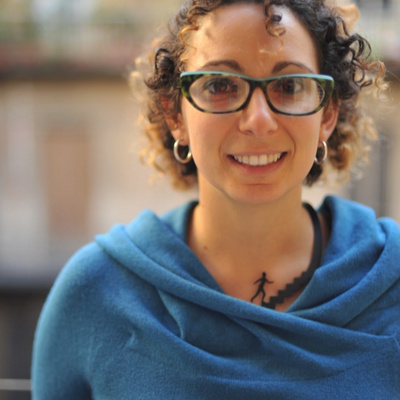Berlin Circus Festival 2019: Two Perspectives
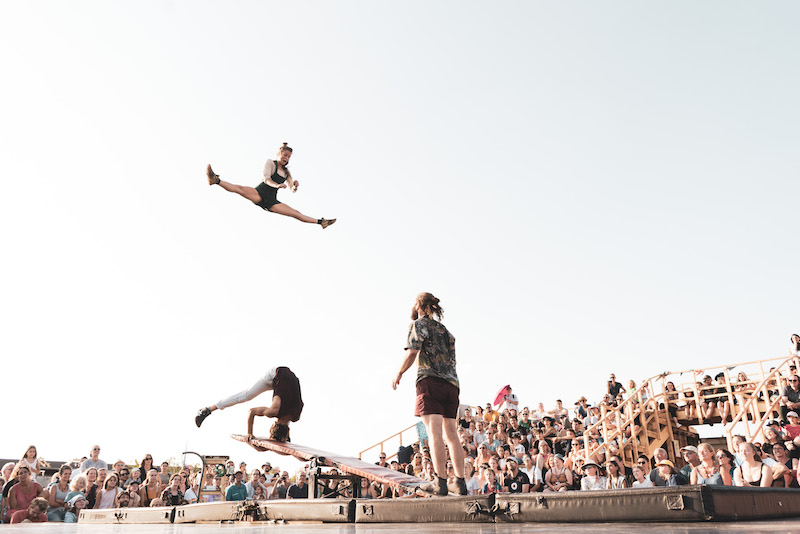
The fifth Berlin Circus Festival took place between August 23 and September 1st. It is a trip that starts at Tempelhof park, an airport until 2008 but now a public park reclaimed as public space and loved by Berliners. Imagine getting there on a sunny day, and feeling the joy of seeing two circus tents and an open air stage in this 386-hectare open space!
Viewpoint of the Organizers
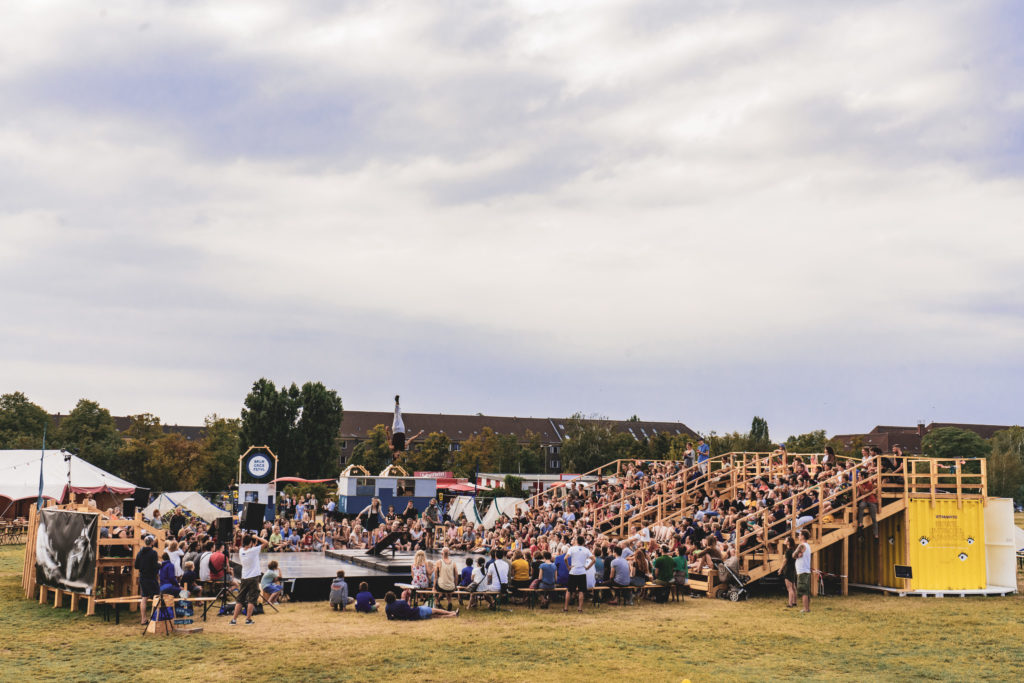
Since the first edition, the audience at Berlin Circus Festival has been growing, this year reaching 9000 people. I asked Farina Berndt, Press and Production manager of the Festival, if this growth is due to the popularity of the Festival or the popularity of contemporary circus in Berlin. She replied,“Both. I think that nowadays the contemporary circus is really hip and more people go to see circus shows and also the festival creates a really nice atmosphere. It’s not a place where you only go and see a show and then you leave again. You can be here almost all day, have a drink at the bar and then you can play games there. The location is amazing. It’s almost impossible to have such a huge space in a city…and there is a special atmosphere. There are many people who came… as volunteers because they like the idea. They are real supporters.”
And she was right, while we were talking, the first show was starting, and there were already people relaxing at the Festival. I askedBerndt what her biggest challenge has been for this 5th edition. She said, “It turned out to be nice, but we were a bit worried about having enough people to host the artists this year because we had many big companies and a big production like the Cirk La Putyka. It was the biggest production we ever showed at the festival…We were talking a lot about it to the technician, about the tent, since the show was made more for theater than for a tent. But it’s really nice when you have such a big challenge and you solve it!”
The last day of a festival is always special, you feel a bit of melancholy that the event is coming to an end, at least for this year. But Berndt reassured me that they just got some funds from the local government that should support them for the realisation of the next four editions. I had a chat with Josa Kölbel, Artistic Director and Co-founder of the Festival along with JohannesHeiliger.
Irene Pepe: Can you tell us more about the #rediscovercircus hashtag you use along with the Berlin Circus Festival brand?
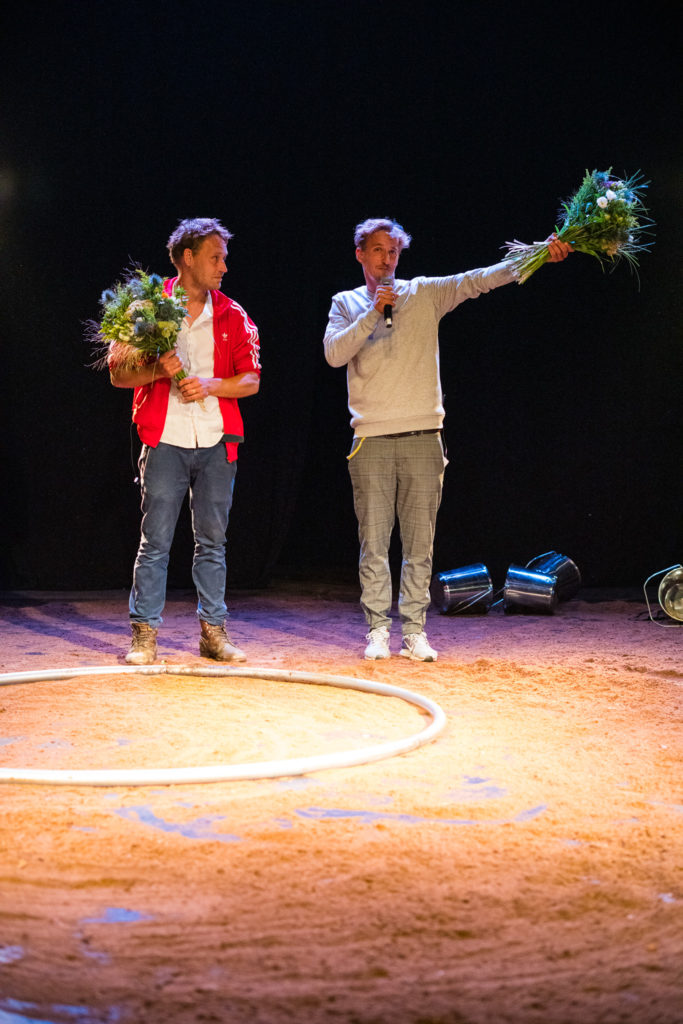
Josa Kölbel: #rediscovercircus came up because we were wondering how to define the festival a bit more clearly and we realize that we do need a claim, a really clear direction. (It’s) also easy to communicate, and we realize that the essence of what we want to say to the audience is an invitation to collectively rediscover circus, for us as well as for professionals, for everyone–German institutions included. Circus was never in the funding scheme in Germany. It was considered an art form until the 20s, but then theater and dance kicked circus out from being an art form actually. So…we realized that there is a vicious circle–there are not enough creations to be programmed because there is not enough funding, and because there’s not enough creations there are no places to program them and vice versa, because there are too few places to perform, they have no visibility, so there is no audience to understand circus and the art cannot really develop. So our mission was to give the art visibility and to focus on high quality in a good context. So making everybody feel good, to exchange and experience.
IP: Many people are talking about the atmosphere of the Festival as familiar and lovely: What makes it feel that way?
JK: I started when I was 10 in a youth circus and my mother started to be the director of this youth circus. So we have both been quite involved in circus. I think when we started the Berlin Circus Festival, a lot of people identified with the project and wanted to support us and we pulled off the event. We also asked a lot of people to support us because we really needed the help and because we didn’t have funding and…it was clear that we just need people to be there with us and help to do everything.
IP: How do you see the Festival growing?
JK: Firstly, we want to continue to establish it and grow, but not necessarily in size. For example, by rethinking a bit what kind of format we want to show. And more importantly, we want to give the public the opportunity to grow with us in understanding the circus art form and developing clear taste. One example are the artists’ moments. To be honest, I think it was after a year where we realized we have the presentations with the artists, that they’re really just presentations. And I believe it’s really precious to be more in exchange with the audience because the audience learns more about the performances, learns about what’s happening here. So, this was the third year we were doing a “Meet the Artist” event and we had really positive feedback both from the artists and the public, so I believe we will keep creating these moments.
Viewpoint of the Audience: The Show Reviews
Asuelto

HURyCAN is the first dance company (with dancers Nathalie Remadi, Pau Cólera, Xavi Auquer Gómez, and Mario Olave)performing at the Berlin Circus Festival.
Asuelto talks about conflict and human relations and it does it in a really intense way. Thefil rouge of the show is the change in the balance of the power of the people on stage. Or in the words of Candelaria Antelo, Artistic Director of the show, “It’s a real situation, it’s a love story taken to its extreme.”
The most extreme moment of dramaturgy is a scene where the male characters on the stage undresses the woman character. Antelo said the situation represents a violation to her, but she thinks that it is not the only way to interpret it. The point is how easily you can move from fighting for something to being violent without even remembering what were you fighting about. In this interpretation rape “happens without a reason” but as consequenceof the unthinking fighting. It’s at this moment–when the laugh on people’s faces freeze and the play moves from showing a game to a violation–that the audience realizes that they were laughing while three men where undressing a woman. And it’s from this feeling that Antelo would like people to reflect about the show.
Tricot
The Kirn Compagnie shares the stage with infinite joy and humour. Recently graduated from ESAC, Lucas Enriquez & Théo Enriquez started their artistic research almost casually after an injury that forced them to use less of their acrobatic training. The two brothers started by playing with a square mattress that inspired them and from there they developed their research further: mixing acro dance and hand to hand with an intimate game of mirror and symmetry. I really enjoyed their playful acrobatic game, interacting together in a fluent way with the atmosphere of lights and shadows. A curious personal detail: they are twins and they both choose to switch from engineering studies to circus in which they were “at an amateur level” since they were eight.
Encore une Fois
This is the first year for Tripotes la Compagnie touring Encore une Fois, whose creation finished this April. The show is about not being afraid to fail, like the mantra of all startups. Mistakes are accepted and failing is not something to complain about but an important opportunity to repeat. Julio Calero Ferre, Daniel Torralbo Pérez and Gianna Sutterlet proved they were fearless also by juggling and playing with light ping pong balls on a windy open stage. What was quickly evident was that they were not playing any character on stage but they were themselves from the very beginning of the show as they built a connection with the audience.
They say the show is 50% improvisation and that they always look for opportunities to interact with the public. They know the technique they will use but the way to structure those moments is left up to inspiration. They play around with sequences, almost like in a jazz improvisation, as if hand to hand, bascule and other elements are just there for them to have fun with. But above all, their acrobatic performances are intended to be playful rather than to show-off technical skills.
The music, an original creation made by Calero Ferre, is an important part of the show because of the use of a MPC (Music Production Center), an instrument that is usually used by DJs, so that the music can follow them and not vice versa.
Raven
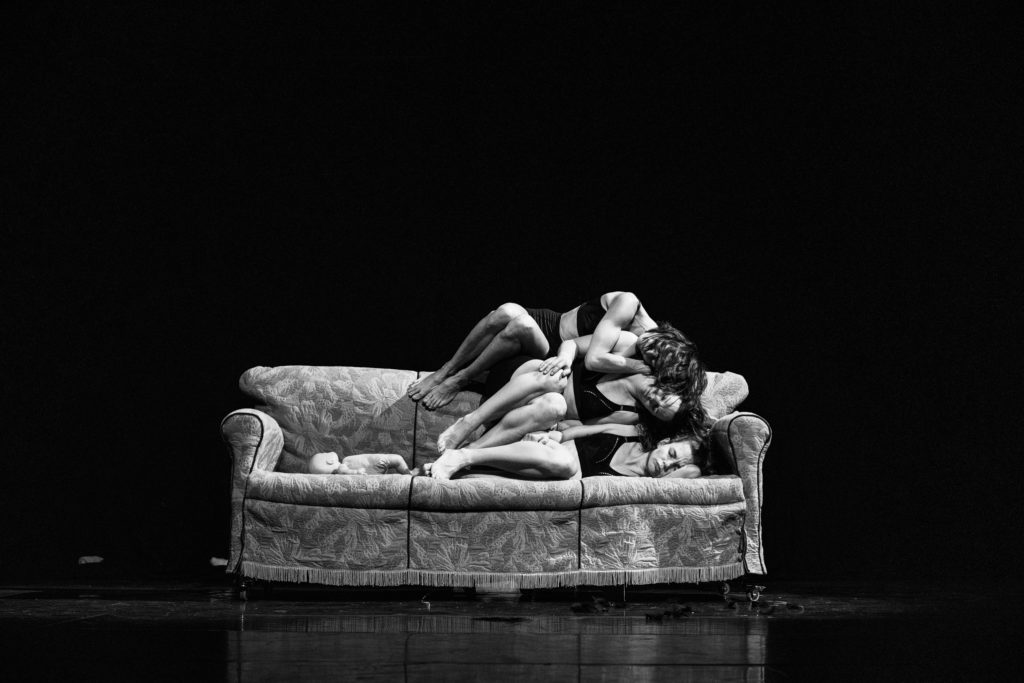
Raven, celebrated its world premiere last year at the 4th Berlin Circus Festival. Created by Still Hungry, a contemporary circus collective from Berlin and produced by the German Chamāleon Productions, which they told me helped them to be ready for the Edinburgh Fringe Festival, where only a few weeks ago our Editor Kim Campbell enthusiastically reviewed their show.
I met with performers Anke van Engelshoven, Lena Ries, and Romy Seibt before the show to find out more about the themes of Raven. Their work explores motherhood, female identity and sexism in a bold way and with humor. They also specifically address the dwindling job opportunities for older women in an industry that tends to look for pretty, young, and flexible women for female-stereotyped roles. Van Engelshoven said, “The roles of females are changing and getting more diverse, so women do not have to give up on being both mothers and artists, performers or whatever they want to be.” She also added that for this performance their collaboration with director Bryony Kimmings was really important, as coming from a different field, Kimmings helped them to name the problem and say it aloud during the show. I personally hope that they will create a “time-to-talk moment” to tour together with the show to meet with our (female) circus artists and feel free to discuss these topics.
Santa Madera

The last show was aSanta Madera, with Juan Ignacio Tula and Stefan Kinsman from the Compagnie MPTA. It was was a total success, complete with a standing ovation. What a great way to close the festival.
They have been performing the show for over two years, and you can see how much work they put into this singular trio that they form with a Cyr wheel. It’s a poetic show about celebratingthe sense of community and the rituals that people create to strengthen their bonds.
As playful, sweet and other times angry interactions between the artists arise, all with an interesting use of natural sounds and flashing lights, the performers moved towards being almost intertwined and melting into a unique entity. It was difficult to recognise where one person ended and the other began. I found myself wondering if the audience had any idea of the weight of a Cyr wheel because the performers were moving as effortlessly as if they were on a hula hoop.
I enjoyed all of the shows and what surprised me most was the “meet the artist” format. In this edition, the artist invited to present himself was the Israeli dancer Yotam Peled, who danced and told his story to the interested audience. I think that it is a powerful moment both for the artists and the audience who can directly ask the performer about their show and their professional development. A spectator told me that every year the festival is a bit different, so I am even more excited to see which new event formats and artists next year brings! The 6th edition will take place August 21st-30th, 2020.
Related content: Edinburgh Fringe Spotlight—Raven, A Reflection on Motherhood, Berlin Circus Festivals’ 4th Edition Offered Variety & Space for Reflection, Innovative Circus in Berlin with Chamāleon Productions
Photos courtesy of Berlin Circus Festival. Feature photo Encore Une Fois. All photo Credits: Christoffer Collina
Editor's Note: At StageLync, an international platform for the performing arts, we celebrate the diversity of our writers' backgrounds. We recognize and support their choice to use either American or British English in their articles, respecting their individual preferences and origins. This policy allows us to embrace a wide range of linguistic expressions, enriching our content and reflecting the global nature of our community.
🎧 Join us on the StageLync Podcast for inspiring stories from the world of performing arts! Tune in to hear from the creative minds who bring magic to life, both onstage and behind the scenes. 🎙️ 👉 Listen now!
